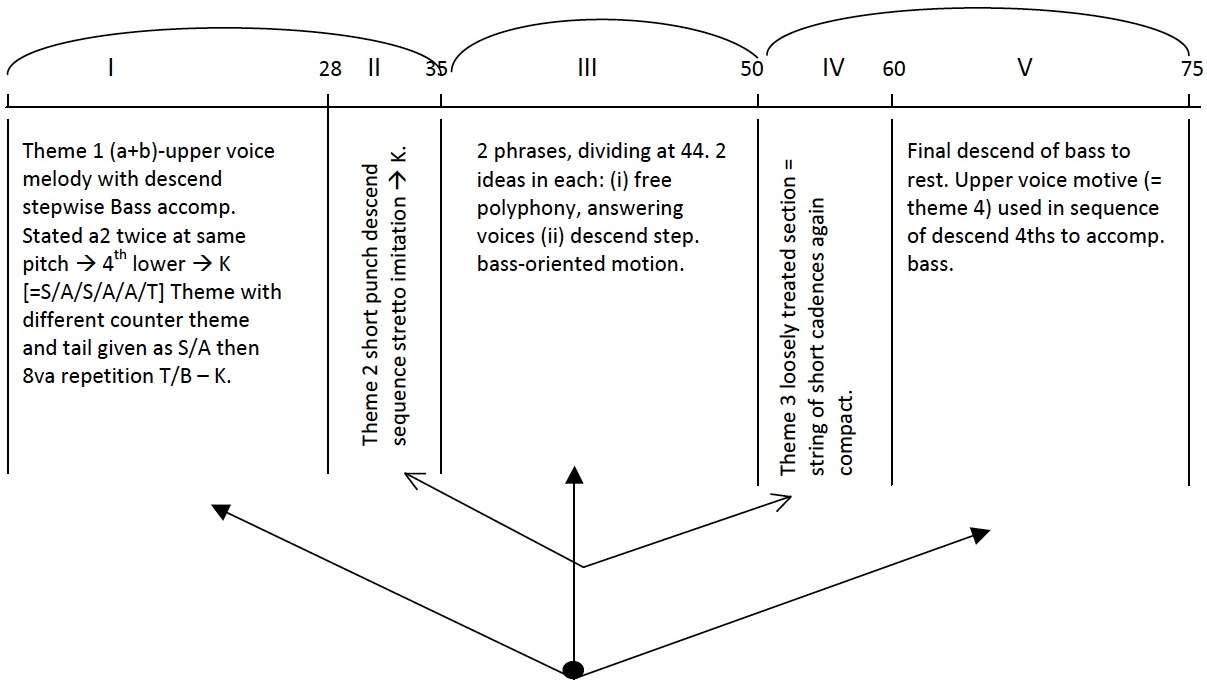Luis de Narváez
Fantasía [10] del cuarto tono
Los seis libros del Delphin (1538), fol. 27
na010
| Source title | Esta fantasia es del quarto Tono/ y enla quarta enel tercero traste esta la claue de fe fa ut. Enla segunda en el primero traste esta la claue de cesolfaut. |
|---|---|
| Title in contents | Fantasia del quarto Tono. |
| Text incipit |

Music
Category abstract
Genre fantasia
Fantasia type ImP
Mode 4
Voices 4
Length (compases) 75
Vihuela
Tuning E
Courses 6
Final VI/0
Highest I/5
Lowest VI/0
Difficulty not specified
Tempo fast
Song Text
Language
Vocal notation
Commentary
This is one of the most immediate of Narváez’s fantasias, and a work of haunting beauty that is closely identifiable with the style of Francesco da Milano and also, to some extent, with Luis Milán. It is divisible into 5 episodes on the basis of themes and cadences, but these are welded into two sections of of 35 + 40 compases. The first section (episodes I and II) is the presentation of the initial theme, its extension, and coda. The second section is a freer discourse with considerable freedom.
Polythematic – partially imitative fantasia. Beautifully balanced sectionalization – through time giving a contrast of motion and intent – regular alternation of ideas. Some adventurous cadences eg. compases 58/59.
Treatment of 1st section is noteworthy. Prominence of descend stepwise motion in bass in sections I, III, V. Brings out the Phrygian character. Very attractive themes and general musical appearance.
It has been suggested that this fantasia is possibly a parody on sections from Josquin’s Missa Hercules Dux Ferrariae: some of its sections are very similar to passages from the “Hosanna” of the Mass which Narváez also intabulated [Na016]. This needs further investigation.
It survives in prints by Phalese and Morlaye as well as one English manuscript, the Willoughby lute book. The inscription at the head of this piece in the Willoughby version has been interpreted differently by different scholars. Ward reads it as “ffantaci de narboyes” (Ward 1992, 5). If this is so, then Ward’s comment on p. 5 is credible: “Vihuelists may have been in Prince Philip’s entourage and that of some of the grandees who accompanied him during the time of the Spanish connection; this might account for the appearance of pieces by Narváez and the Conde claros variations in the Osborn and Willoughby Mss”. On the other hand, what Ward reads as “narboyes” has been read as “Morlaye” by other observers and would lead to the conclusion that the work was copied from 1552-04.
• Phalèse, Des chansons reduictz en Tablature, fol. b2v (Brown 1546-18, nº 4)
• Morlaye, Premiere livre de tabulature de leut, fol. 5v (Brown 1552-04, nº 4).
• Willoughby Lute Book (Nottingham Univ. Lib., Mi LM 16), fol.1v-2 (nº 1) “ffantaci de narboyes”

Editions
Literature
Recordings
smith03 Narváez, Los seys libros del Delphin Hopkinson Smith solo Narváez
rivera02 El Delfín de Música Juan Carlos Rivera, Marta Almajano solo vihuela song Narváez
maier01 The Art of Vihuela Ralph Maier solo Milán Narváez Mudarra Valderrábano Fuenllana Daza
eisenhardt03 La Guitarre Royalle Lex Eisenhardt Milán Narváez Fuenllana Mudarra
marquez01 Luys de Narváez. Música del Delphin Pablo Márquez solo Narváez
diaz01 Narváez, Los libros del Delphin Xavier Díaz-Latorre solo Narváez
boysen01 Silva de Sirenas Thomas C. Boysen solo Narváez Valderrábano
cherici01 El Siglo de Oro: Obras para vihuela 1 Paolo Cherici solo Milán Narváez